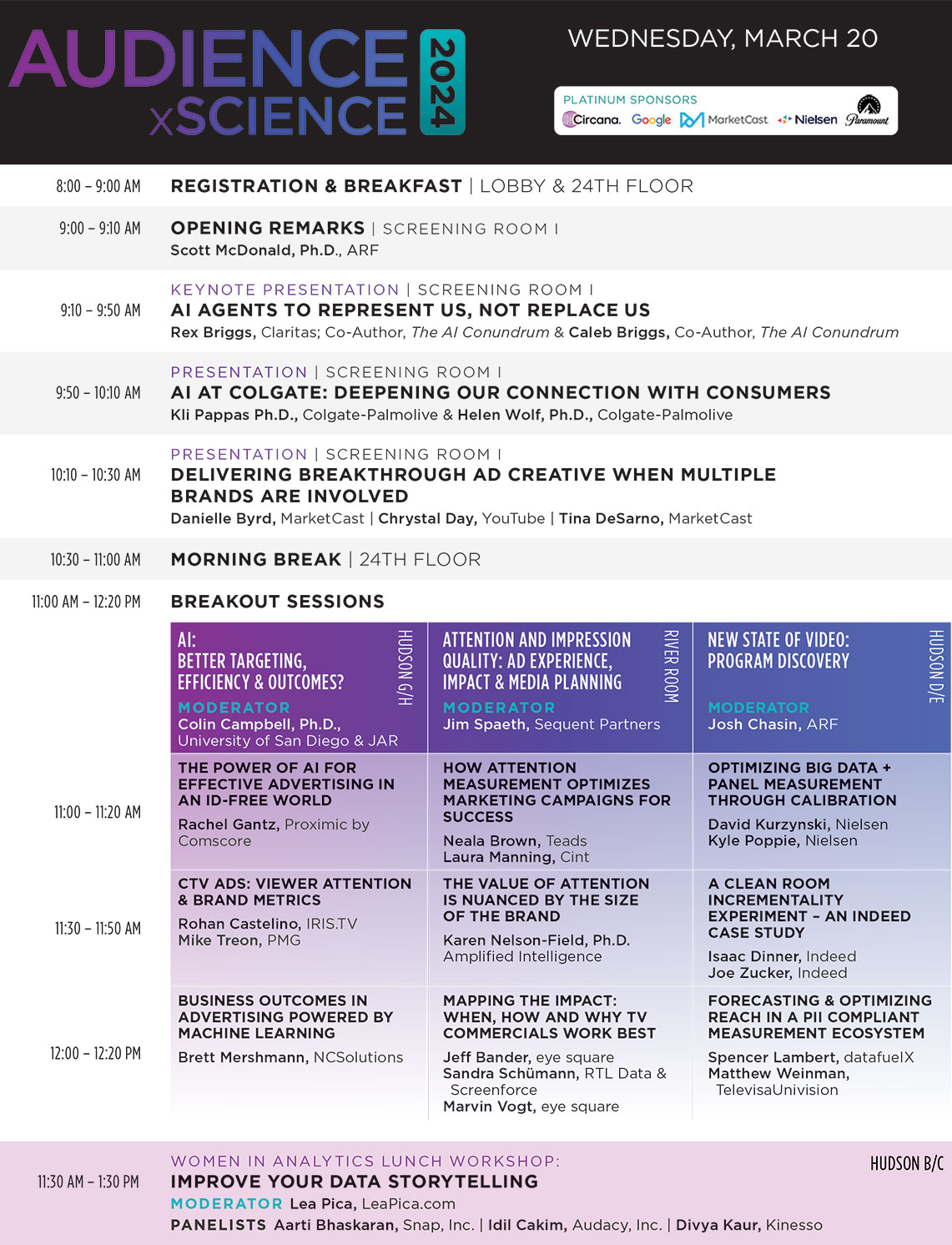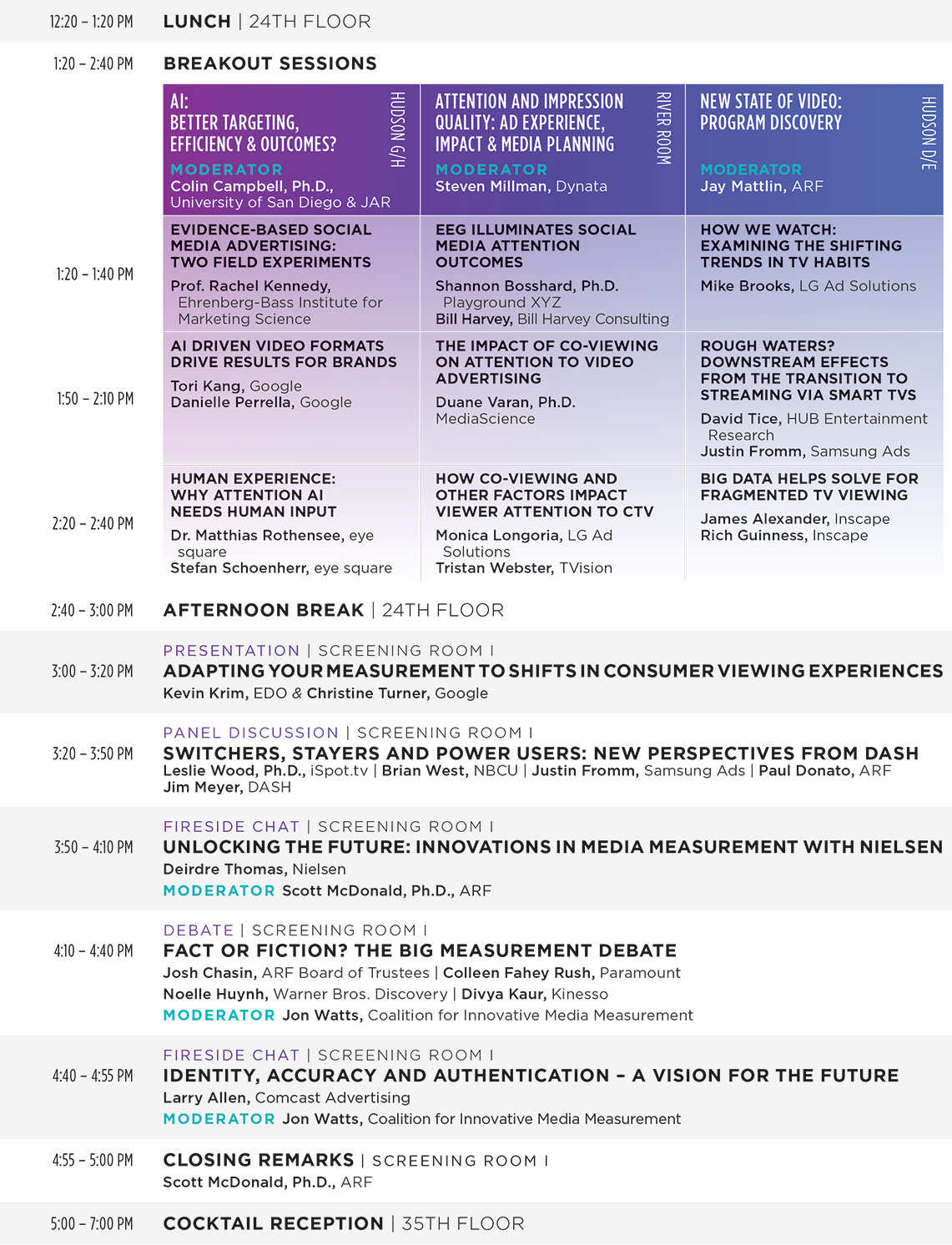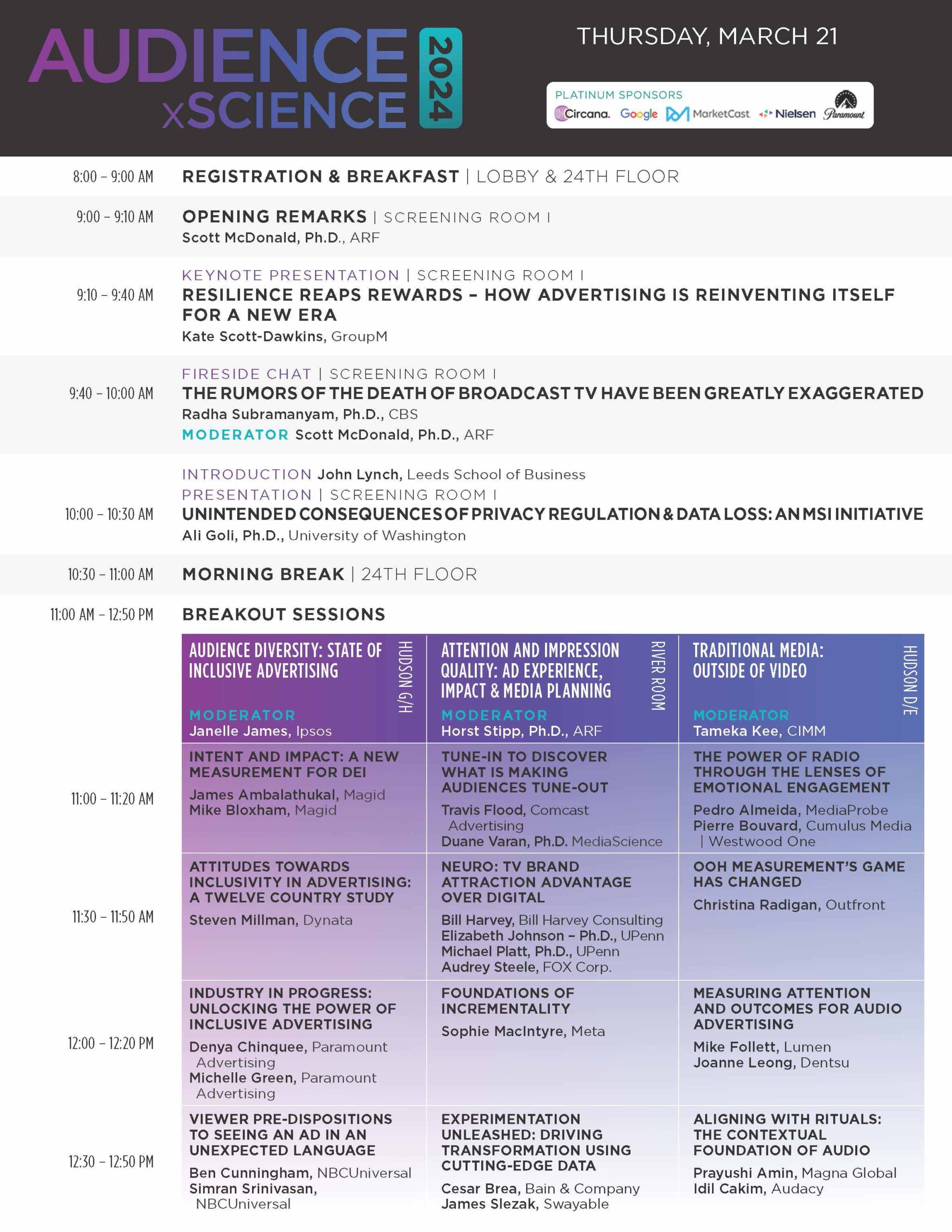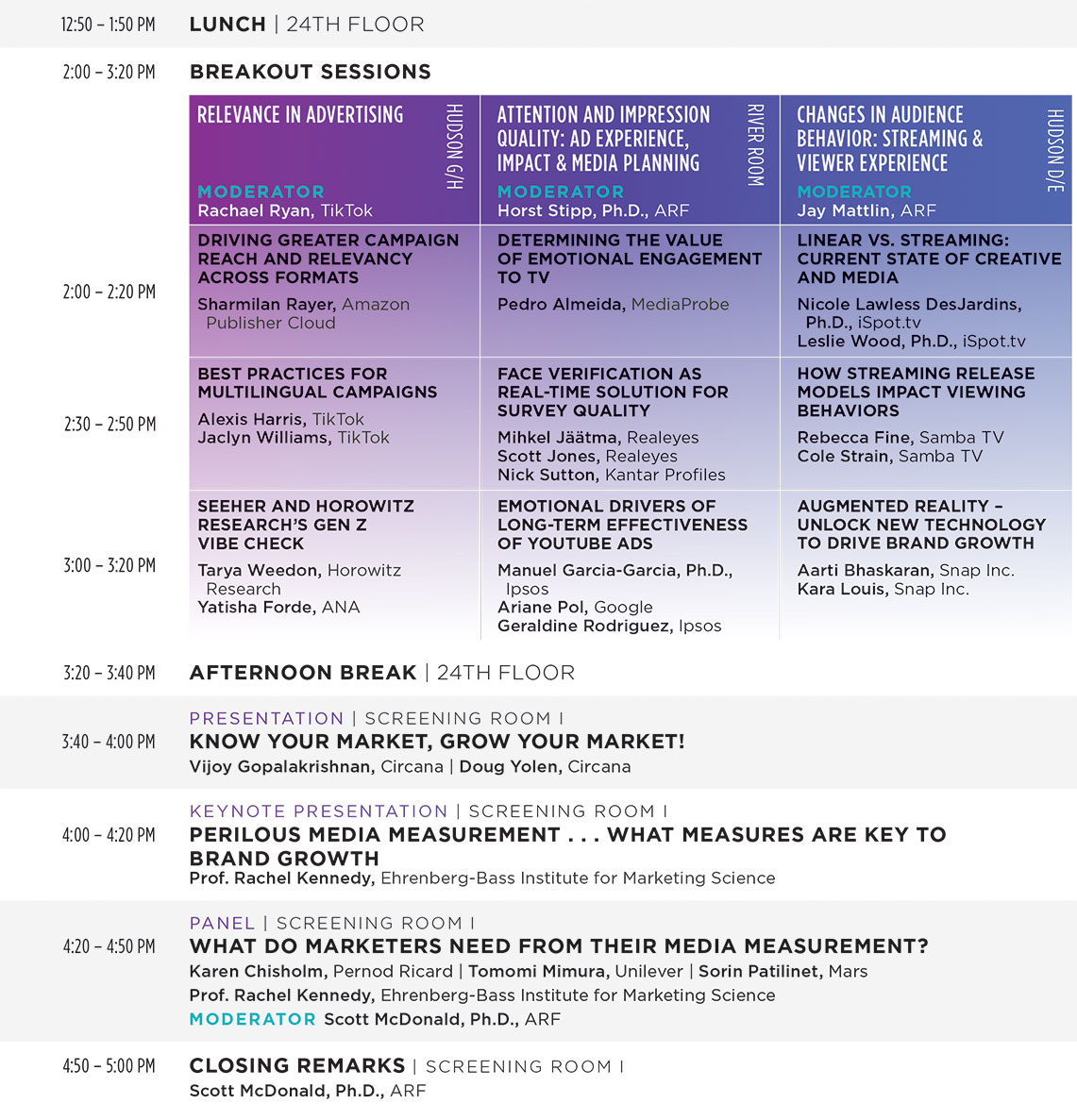|
AUDIENCE DIVERSITY:
State of Inclusive Advertising
HUDSON G/H
Moderator: Janelle James, Ipsos |
ATTENTION AND IMPRESSION QUALITY: Ad Experience, Impact & Media Planning
RIVER ROOM
Moderator: Horst Stipp, Ph.D., ARF |
TRADITIONAL MEDIA: Outside of Video
HUDSON D/E
Moderator: Tameka Kee, CIMM |
| 11:00–11:20am |
Intent and Impact: A New Measurement for DEI
Measuring audience perceptions of DEI and the drivers of authenticity in TV and Film.
James Ambalathukal – Director, Strategy & Insights, Magid
Mike Bloxham – EVP, Global Media & Entertainment, Magid |
Tune-In to Discover What is Making Audiences Tune-Out
Better understand the viewer experience to optimize ad performance and maximize impression value.
Travis Flood – Executive Director of Insights, Comcast Advertising
Duane Varan, Ph.D. – CEO, MediaScience |
The Power of Radio Through the Lenses of Emotional Engagement
Radio is an effective medium to engage consumers and deliver strong advertising results.
Pedro Almeida – CEO, MediaProbe
Pierre Bouvard – Chief Insights Officer, Cumulus Media | Westwood One |
| 11:30–11:50am |
Attitudes Towards Inclusivity in Advertising: A Twelve Country Study
Diversity and inclusion in advertising: how different groups view their representation across twelve countries.
Steven Millman – Global Head of Research & Data Science, Dynata |
Neuro: TV Brand Attraction Advantage Over Digital
TV costs less than digital per attentive second and per brand attraction stored memory.
Bill Harvey – Executive Chairman, Bill Harvey Consulting
Elizabeth Johnson, Ph.D. – Executive Director & Senior Fellow, Wharton Neuroscience Initiative, UPenn
Michael Platt, Ph.D. – Director, Wharton Neuroscience Initiative, UPenn
Audrey Steele – EVP Sales Research Insights & Strategy, FOX Corp. |
OOH Measurement’s Game Has Changed
A shift in how brands use out of home to meet consumers throughout their journey and reposition OOH’s value and role in the marketing mix.
Christina Radigan – SVP, Research & Insights, Outfront |
| 12:00–12:20pm |
Industry In Progress: Unlocking The Power of Inclusive Advertising
Research study to help marketers build their inclusivity IQ, achieving true diverse representation in advertising.
Denya Chinquee – Senior Director, Audience Impact & Intelligence, Paramount Advertising
Michelle Green – Manager, Audience Impact & Intelligence, Paramount Advertising |
Foundations of Incrementality
New methods can help advertisers move up the ladder of incrementality – and enable other research – by leveraging past experiments in lightweight ways.
Sophie MacIntyre – Ads Research Lead, Marketing Science, Meta |
Measuring Attention and Outcomes for Audio Advertising
An industry-first project measures attention to audio ads compared against other media formats.
Mike Follett – CEO, Lumen
Joanne Leong – Global Head of Planning, Dentsu |
| 12:30–12:50pm |
Viewer Pre-Dispositions to Seeing an Ad in an Unexpected Language
Is ad language an obstacle to viewer comprehension, or is it an invisible fence?
Ben Cunningham – Director, Ad Experience Measurement, NBCUniversal
Simran Srinivasan – Product Manager, Video Products, NBCUniversal |
Experimentation Unleashed: Driving Transformation Using Cutting-Edge Data
Building transformative programs that leverage causal impact data to drive major increases in returns from brand marketing.
Cesar Brea – Partner, Bain & Company
James Slezak – CEO, Swayable |
Aligning with Rituals: The Contextual Foundation of Audio
The importance of aligning audio ads with consumer rituals for more effective campaigns.
Prayushi Amin – Associate Director, Magna Global
Idil Cakim – SVP, Research & Insights, Audacy |


































































